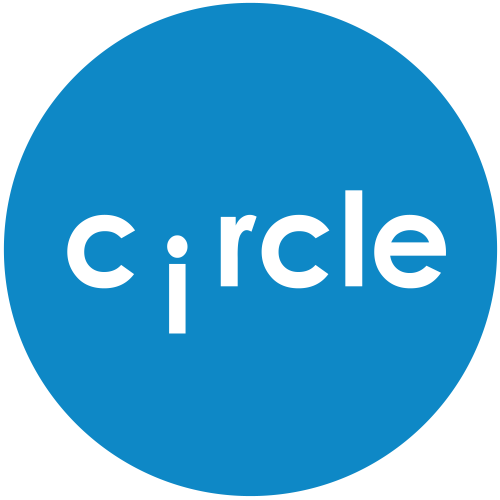 ICT tools for entrepreneurship ICT tools for entrepreneurshipThe basics. Introduction.Click to read
 Information and Communication Technology tools are an important part of today's businesses. That is why in this unit we will see how to transfer its benefits to entrepreneurial activity. It is important that, as a preliminary step to entrepreneurship, a business plan, and even a marketing plan, is drawn up to address all the important issues that will enhance the success of the business. Therefore, in the related material section you will find information on how to develop your own business plan and more. Don't forget to check out the "related material" section to learn more about entrepreneurship and ICT tools! Corporate image & tools. How do you show yourself to your customers?Click to read
 The corporate image is mainly reflected through your company logo, so it is necessary that your logo shows what you want your customers to see of your company. Your logo must be unique, it must be related to your business activity, and it must also be aesthetically pleasing. Let's look at an example: Imagine you have a business that rents out rural holiday homes, called "Ruraland", which logo would be most appropriate?
The logo should be included in everything that can identify the company: social media, web page, packaging...
What tools can you use to design your corporate image?
Project management tools. How to organise my workload?Click to read
 Organising work is vital for the proper functioning of a company, as it allows you to know what needs to be done at any given moment. Below are project management and organisation tools that will allow you to keep everything under control in a synchronised way on your computer and on your smartphone or tablet:
Communication tools. The coordination with others.Click to read
 Communication covers two areas: internally, with the company's employees; and externally, with customers. Therefore, tools for communication and coordination with others are shown below:
E-commerce. Basic tools for selling online.Click to read
 E-commerce is the practice of buying and selling products over the Internet. This can be done in different ways: you can create your own online shop, by hiring a company to design it, or you can use other platforms to create your shop, as well as using a marketplace. Here are some examples of tools you could use:
 Cybersecurity CybersecurityThe basics. Introduction.Click to read
 Cybersecurity is the practice of protecting systems and sensitive information from digital attacks. Cybersecurity applies to many domains: infrastructures, networks, applications, cloud, information, storage… This is a practice that is today essential both at user and business level, as there are numerous risks that can compromise confidential information, such as credit cards, identification, etc. Below you will learn about the most common risks when surfing the Internet, learn how to create a strong password, and find several recommendations for keeping your digital devices and information safe. Don't forget to check out the "related material" section to learn more about cybersecurity! Cybersecurity risks. What do you face when surfing the Internet?Click to read
 When surfing the Internet, it is common to be exposed to risks that can compromise the security of your information and devices. Among the most common threats that you are most likely to face when surfing the Internet are:
However, there are more threats that you can research if you have an interest in cyber security:
Passwords. Create a strong password.Click to read
 Passwords are used to protect your personal information, emails, files, important documents, accounts, etc., so it is important that they are strong. They must consist of a combination of letters, numbers and symbols (accents cannot be included), following the recommendations below:
Some examples of passwords that you should NOT use: password; qwerty; 1234...
Recommendations.Click to read
 Below you will find a series of cybersecurity tips and recommendations:
Be wary of anything suspicious you see on the Internet!  Problem solving Problem solvingThe basics. Introduction.Click to read
 Being decisive is a much-needed quality these days, especially when it comes to computers and digital devices. What happens when the computer won't turn on? Or when you can't hear calls on the phone? You call a service technician? Or maybe try to fix it yourself first? This unit will explore the most common problems and their possible solutions, and provide the tools needed to conduct effective Internet searches that can help solve certain problems. Don't forget to check out the "related material" section to learn more about problem solving! Common problems and how to solve them.Click to read
 The following is a list of the most common problems when operating a computer, and possible solutions:
How to search effectively on the Internet.Click to read
 Maybe one day you have a problem that you don't know how to solve, but it can be easily solved if you have the information you need. Therefore, here are some tips and tricks to search effectively on Google:
 Summing up Summing upSumming upClick to read

| |||||||||||||||||||||||||||||||||||||||||||||||||||||||||||||||||||||||||||
 Test Yourself
Test Yourself

Legal description – Creative Commons licensing: The materials published on the MORE project website are classified as Open Educational Resources' (OER) and can be freely (without permission of their creators): downloaded, used, reused, copied, adapted, and shared by users, with information about the source of their origin.
entrepreneurship, ICT tools, corporate image, cybersecurity, problem solving
Objectives:
At the end of this module you will be able to:
- Know the main ICT tools for entrepreneurship.
- Have the necessary skills to start selling products or services through e-commerce.
- Navigate the Internet safely.
- Solve the most common problems you may face when using digital devices.
Description:
Digital skills are an essential qualification for entrepreneurship. For this reason, this module takes a look at the most basic ICT tools that will allow you to manage your Internet presence, as well as to navigate safely. Additionally, you will be introduced to possible solutions for the most common problems you may face while operating a computer, and you will learn how to find solutions to your problems independently, and finding your own resources, according to your needs.
Related Materials:
Unit 1 – ICT tools for entrepreneurship
Write a business plan. https://www.gov.uk/write-business-plan
How to Write a Marketing Plan: A Comprehensive Guide [w/ Templates]. https://vtldesign.com/digital-marketing/digital-marketing-strategy/how-to-write-marketing-plan-template/
What is corporate image and why is it important for your company. https://trazada.com/en/what-is-corporate-image-and-why-is-it-important-for-your-company/
13 Work Organization Tools To Improve Your Productivity (2021). https://www.indeed.com/career-advice/career-development/work-organization-tools
The 10 Most Essential Digital Communication Channels for Business (2022). https://gettalkative.com/info/communication-channels
How to Start an Ecommerce Business: Build an Ecommerce Store (2022). https://www.shopify.com/blog/ecommerce-business-blueprint
Unit 2 – Cybersecurity
Cybersecurity: main and emerging threats in 2021 (infographic) (2022). https://www.europarl.europa.eu/news/en/headlines/society/20220120STO21428/cybersecurity-main-and-emerging-threats-in-2021-infographic
How to create a strong password (2018). https://blog.avast.com/strong-password-ideas
Check your password. https://password.kaspersky.com/
Google Password Manager. https://passwords.google.com/
10 Personal Cyber Security Tips. https://cipher.com/blog/10-personal-cyber-security-tips-cyberaware/
Unit 3 – Problem solving
Top 10 Most Common Computer Problems. https://answers.mak.ac.ug/computer-hardware/top-10-most-common-computer-problems
10 Tips and Tricks to Use Google Search More Effectively (2021). https://www.makeuseof.com/tips-tricks-to-use-google-search-effectively/
13 Google Alternatives: Best Search Engines to Use In 2022 (2021). https://fossbytes.com/google-alternative-best-search-engine/
Bibliography
Cardona, L. (2021). ¿Qué es un ecommerce? Tipos, cómo crearlo y ejemplos. https://www.cyberclick.es/numerical-blog/que-es-un-ecommerce-tipos-como-crearlo-y-ejemplos
Warnimont, J. (2022). Las 20+ mejores plataformas de comercio electrónico gratuito y de código abierto para 2022. https://ecommerce-platforms.com/es/articles/open-source-ecommerce-platforms
Martín, A. H. (2019). 10 trucos para hacer búsquedas efectivas en Google. http://educazonia.com/2019/03/19/busquedas-efectivas-en-google/
Google (2022). Create a strong password & a more secure account. https://support.google.com/accounts/answer/32040?hl=en#zippy=%2Cusa-una-contrase%C3%B1a-%C3%BAnica%2Cevita-usar-datos-personales-y-palabras-comunes%2Cusa-una-contrase%C3%B1a-larga-y-f%C3%A1cil-de-recordar%2Cgestiona-las-contrase%C3%B1as-con-una-herramienta%2Coculta-las-contrase%C3%B1as-escritas
Zarate, D. (2022). Las 24 mejores apps de agenda y calendario para 2022. https://blog.hubspot.es/sales/apps-calendario
IBM (2022). Cybersecurity. https://www.ibm.com/topics/cybersecurity
Makerere University (2021). Top 10 Most Common Computer Problems. https://answers.mak.ac.ug/computer-hardware/top-10-most-common-computer-problems
Vodafone (2022). Imagen corporativa: herramientas y consejos para crear el logo perfecto para tu empresa. https://ideasparatuempresa.vodafone.es/imagen-corporativa-herramientas-y-consejos-para-crear-el-logo-perfecto-para-tu-empresa/







